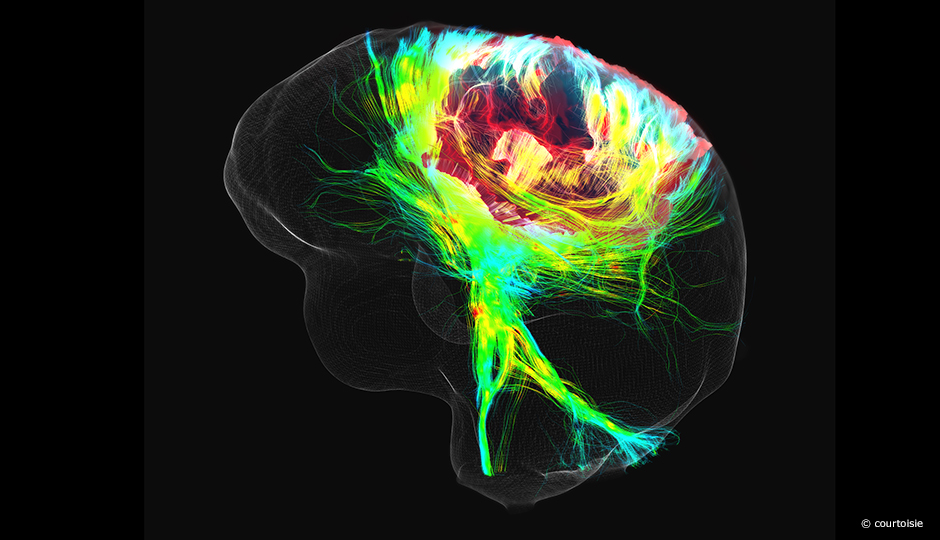We can now see the human brain in all its complexity… down to the last fibre!
With the help of neurosurgeon David Fortin, Maxime Descoteaux, a computer science professor in the Department of Computer Science of the Faculty of Science at Université de Sherbrooke, has converted an existing imaging technique into a sort of Google Street View of the brain, producing a detailed view of the nerve fibres connecting the brain's neurons like a road network. This brain map also shows the state of the neuronal "roads", making it a tool for identifying damaged brain fibres, a precursor of neurodegenerative diseases such as multiple sclerosis, Alzheimer's and Parkinson's disease.
Descoteaux's innovation consists of taking a small number of very precise measurements in many directions at once, and combining them into a 3-dimensional image.
Maxime Descoteaux has been working on diffusion Magnetic Resonance Imaging which, much like a satellite filming highway traffic, captures the movement of water molecules in brain tissue. Using complex calculations and advanced modelling, the researcher affiliated to the Centre hospitalier universitaire de Sherbrooke has developed a faster, more precise technique for acquiring and processing imaging data of the brain, reducing the traditional hour-long examination to about ten minutes! Descoteaux's innovation consists of taking a small number of very precise measurements in many directions at once, and combining them into a 3-dimensional image that reveals the trajectory of water molecules along the nerve fibres.
This tool still needs to undergo clinical trials, but is already generating enthusiasm among neuroscientists who are attempting to map the human connectome, or the complete network of neural connections in the brain. Maxime Descoteaux has been hired as consultant on this major project.




